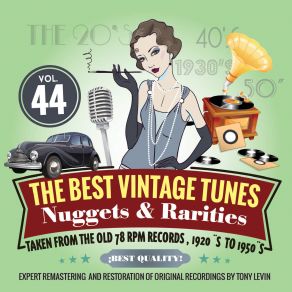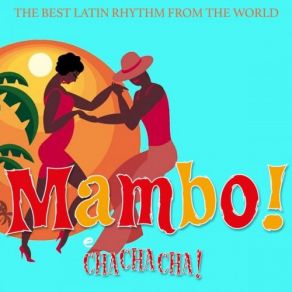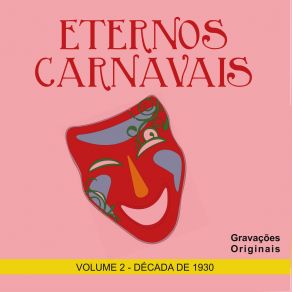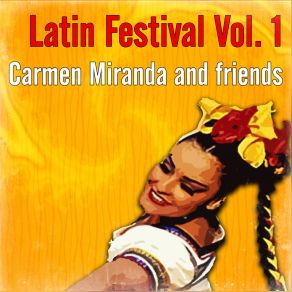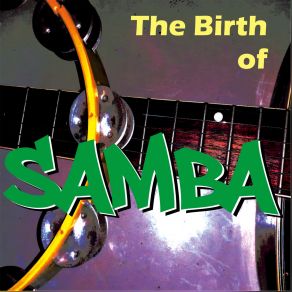Bando Da Lua
Wikimp3 information about the music of Bando Da Lua. On our website we have 0 albums and 8 collections of artist Bando Da Lua. You can find useful information and download songs of this artist. We also know that Bando Da Lua represents Latin genres.
Biography
[Edit]The Bando da Lua was the first in Brazil to harmonize voices and have success abroad. From 1931 to 1940, they recorded 38 albums in Brazil with 74 songs and many hits, including "Tristeza," "A Hora é Boa," "Mangueira," "Menina que Pinta o Sete," "Que é que Maria Tem?," "Cansado de Sambar," "Saudades do Meu Barracão," "Bola Preta," "Pegando Fogo," "Samba da Minha Terra," "Abandona o Preconceito," "Menina das Lojas," "Deixa o Passado," and others. They also accompanied Carmen Miranda in her first eight films and at all of her American gigs, as well as Bing Crosby on some sessions.
The vocal/instrumental group was formed in 1931. The carnival parties used to present several groups, called "blocos," and the Bloco do Bimbo (awarded in a neighborhood contest) was the departure point for the Bando da Lua, still an unnamed team of seven middle-class friends: Aluísio de Oliveira, violão and lead vocal; Hélio Jordão Pereira, violão; Vadeco (Osvaldo de Morais Éboli), pandeiro; Ivo Astolfi, tenor guitar and banjo; and the brothers Afonso Osório, percussion and flute, and Armando Osório, violão; and Stênio Osório, cavaquinho. They auditioned for the Parlophon label through a contact with conductor J. Tomás, with no results. Josué de Barros, who "discovered" Carmen Miranda, decided to place a bet on them, opening the opportunity for their first album, through Brunswick, with the songs "Que Tal a Vida?" and "Tá de Mona," both by Maércio de Azevedo and Oldemar Gomes Pereira (Mazinho).
The name Bando da Lua was given, according to some, by Nelson Gomes Pereira. In 1933, the group began to record through Odeon, scoring a hit with the march "Opa Opa." That first Odeon album also had the samba "É tua Sina," both by Maércio and Mazinho. At that point, they began to actively participate in radio shows, especially the Programa Casé, the first and most important musical radio show of those times, at the prestigious Rádio Nacional. They would record two other albums through Odeon before departing for Victor in 1934. Their first album for the new label had a hit with the march "A Hora é Boa" (Mazinho/Aluísio). With Miranda, they toured Argentina, performing separately but also helping her sporadically. Upon returning, Armando Osório left the group, which was then left with six members. In 1935, they participated in the film Alô, alô Brasil (Wallace Downey/João de Barro/Alberto Ribeiro) singing the march "Deixa a lua Sossegada" (João de Barro/Alberto Ribeiro) and "Estudantes" (Wallace Downey).
Before the end of that year, they would again travel to Argentina and perform there for the next two seasons. In 1937, they stayed there for four months, playing at two radio stations (El Mundo, in Buenos Aires, and Carve, in Montevideo), and in several theaters. In the following year, they toured Argentina and Chile, where they were welcomed by President Arturo Alessandri at the Palace. The tour would continue through Peru and Colombia, but was interrupted because Stênio Osorio became ill. In 1936, they also accompanied the important composer/folklorist Waldemar Henrique and his sister, the singer Mara, on Waldemar's folkloric suite "Cena Dramática dos Congos," written especially for the commemoration of Radio Tupi's first anniversary. The presentation, in a prime time broadcast, had to be repeated such was its success. Coming back to Brazil in 1938, the group performed at the famous Cassino da Urca accompanying Miranda. One of those nights, Miranda was approached by American impresario Lee Schubert, who invited her for a season in the U.S. She accepted, but brought the Bando da Lua with her. Their first gig was in the musical Streets of Paris and was met with great success. Astolfi returned to Brazil that same year to marry; he was replaced by the fundamental violonista Garoto (Aníbal Augusto Sardinha), who was announced separately, not as a member of the group. Garoto participated on Miranda's Decca sessions and in the film Down Argentine Way. They also recorded some solo albums for Decca and provided rhythm support for other artists under the name Bando Carioca. They all (including Miranda) returned to Brazil in 1940. Garoto stayed in there and was replaced by singer/violonista Nestor Amaral. Established as Miranda's accompanists instead of a solo act, which would be the beginning of the end, they returned to the U.S. with her. In 1942, Hélio Jordão left the group and in 1944, Vadeco departed as well. In 1948, Aluísio re-organized the group with former members of the successful vocal/instrumental group Anjos do Inferno: Lulu (Aluísio Antunes Ferreira), violão; Harry Vasco de Almeida, trumpet/percussion; and Russinho (José Ferreira Soares), pandeiro. From the several albums recorded with that formation, one was appointed by Metronome Magazine as Record of the Month in 1950. The Bando da Lua was definitively dissolved in 1955 with Miranda's death.
Collections
Title: The Best Vintage Tunes. Nuggets & Rarities Vol. 44
Genre: Pop
Title: Os Melhores Do Reggae Vol. 01
Genre: Reggae
Title: Mambo E Cha Cha Cha



